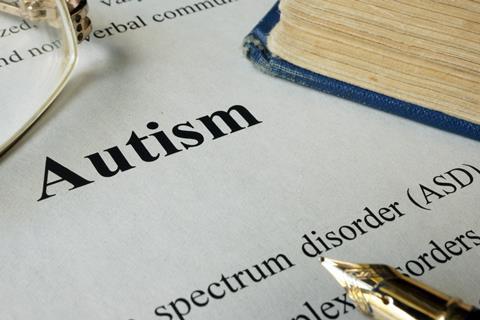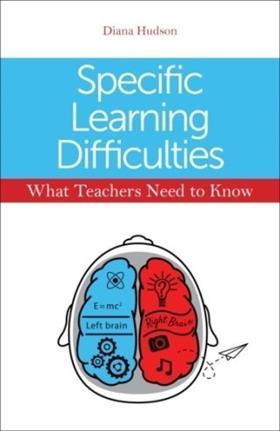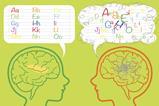The noises and smells of chemistry lessons can stress students with autism spectrum disorder. Here are simple things you can do to support them

People with autism spectrum disorder (ASD) tend to have social and communication difficulties and find it hard to interpret the behaviour and conversations of others. They also have restricted patterns of behaviour, interests and activities.
Symptoms vary along a continuum from mild to severe. While children with more severe symptoms usually attend specialist schools, pupils with mild symptoms are encountered in mainstream schools.
Until recently, mild ASD diagnosed in people within the normal range of intelligence and language development was referred to as Asperger syndrome, but this is now defined simply as mild ASD and it occurs in 1–2% of the population. It is identified more commonly in boys, but this might be due to girls masking symptoms more than boys.
ASD is diagnosed medically. Often children with ASD in mainstream schools are not diagnosed early and this can cause years of difficulty and upset.
Characteristics
People with ASD tend to be honest, punctual, reliable and observant. They may have excellent focus on detail and factual knowledge of certain topics. Decisions are based on logic not social expectation and they like to follow clear rules.
ASD students may speak in a monotone using pedantic language and complex vocabulary. They tend to interpret words literally and have difficulty picking up implied information, reading body language and understanding jokes, metaphors, sarcasm or idioms. They might prefer ‘meaningful’ conversations with adults rather than engaging with their peers who seem unpredictable and may have different interests. They do not instinctively know when to start or stop speaking and there is often a lack of eye contact.
ASD students have an inflexible attitude and find it difficult to socialise. Unfortunately, they may become isolated and can be the butt of jokes or bullied.
Challenges in chemistry
People with ASD often have increased sensitivity to noise, smells, light or the touch of certain materials. These stimuli can be intrusive and distracting and can even cause genuine pain or nausea. Chemistry labs may have bright strip lighting, buzzing machines and smells. Wearing lab coats and goggles can be uncomfortable and irritating. Concentration can be really hard in this setting.
Practical sessions can also be more unpredictable than other lessons, causing stress. Other difficulties might include interpreting instructions, especially if not explicit, or estimating how long to spend on tasks. Group working involving sharing resources and listening to others’ ideas might cause friction.
Poor coordination can be a problem and this causes difficulty handling equipment, as well as balancing on stools and writing.
For all these reasons, anxiety can increase in a crowded laboratory. Temper outbursts from frustration and sensory overload are possible. Sometimes, if tension escalates they may have to leave the laboratory. A safe, supervised room designated by the school is then invaluable.
How can chemistry teachers help?
Classroom arrangements that could make all the difference:
- Allow the student personal space. Seat them at the end of a row near you so you can spot difficulty or anxiety.
- Let them keep the same seat.
- Create a separate small, quiet place for them to work to work if needed.
- Avoid too much visual distraction with posters or models.
- Remove clutter from the floor and surfaces.
- Keep equipment in labelled cupboards.
Lessons with routine and rules create a safe environment for a student with ASD:
- Have a consistent beginning and end routine to each lesson.
- Explain what will happen during a lesson, especially if it involves practical work.
- Give expected time for tasks.
- Have clear rules for behaviour and working.
- Break tasks into small units of work that can be ticked off.
- Introduce one skill at a time.
- Minimise writing time by using handouts with gaps.
- Describe clearly how to answer questions or write up experiments.
- Be flexible to the student’s mood, sometimes allowing computer work or a solo project.
- Give advance warning wherever possible of any future changes to routine.
- Pair working can be mutually beneficial. Choose partners or groups and be aware of potential difficulties.
When demonstrating:
- Give a warning before bangs or flashes.
- It can help if students have a preferred scent in a pocket.
- Allow them to wear ear mufflers if preferred.
When speaking:
- Be very direct in your manner – state exactly what you want in short, clear sentences.
- Behave in a consistent, calm way.
- Give logical explanations based on known facts.
- Define and explain key chemistry words, especially those with two meanings, eg mole, solution and concentration. (They might enjoy thinking of more.)
- Use the student’s name first when giving instructions – ‘John, please show me your results’
When listening:
- Do not assume rudeness due to lack of eye contact.
- Inappropriate comments can be corrected but do not take them personally.

Rewards and praise
Look for progress, reward success and give encouragement. Try to bolster morale and see their potential. Students who are on the ASD spectrum can become excellent scientists and some firms are actively recruiting them for their skills. It is suggested that Henry Cavendish, Isaac Newton and Charles Darwin were all on the ASD spectrum so their future could be great.

Learning difficulties and chemistry

Use these tips to make your lessons inclusive, engaging and memorable
- 1
- 2
 Currently
reading
Currently
reading
How to support students with autism spectrum disorder


















No comments yet